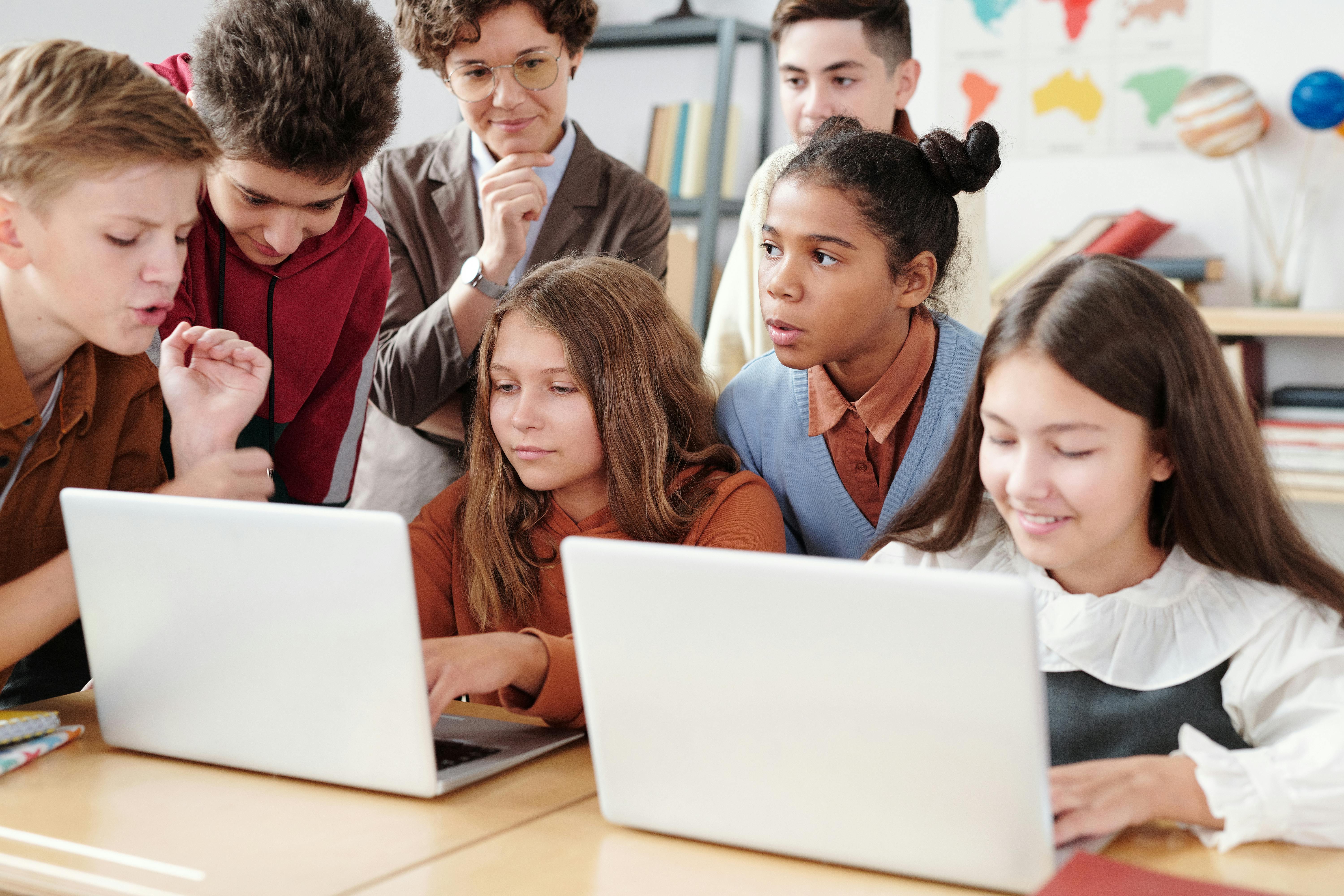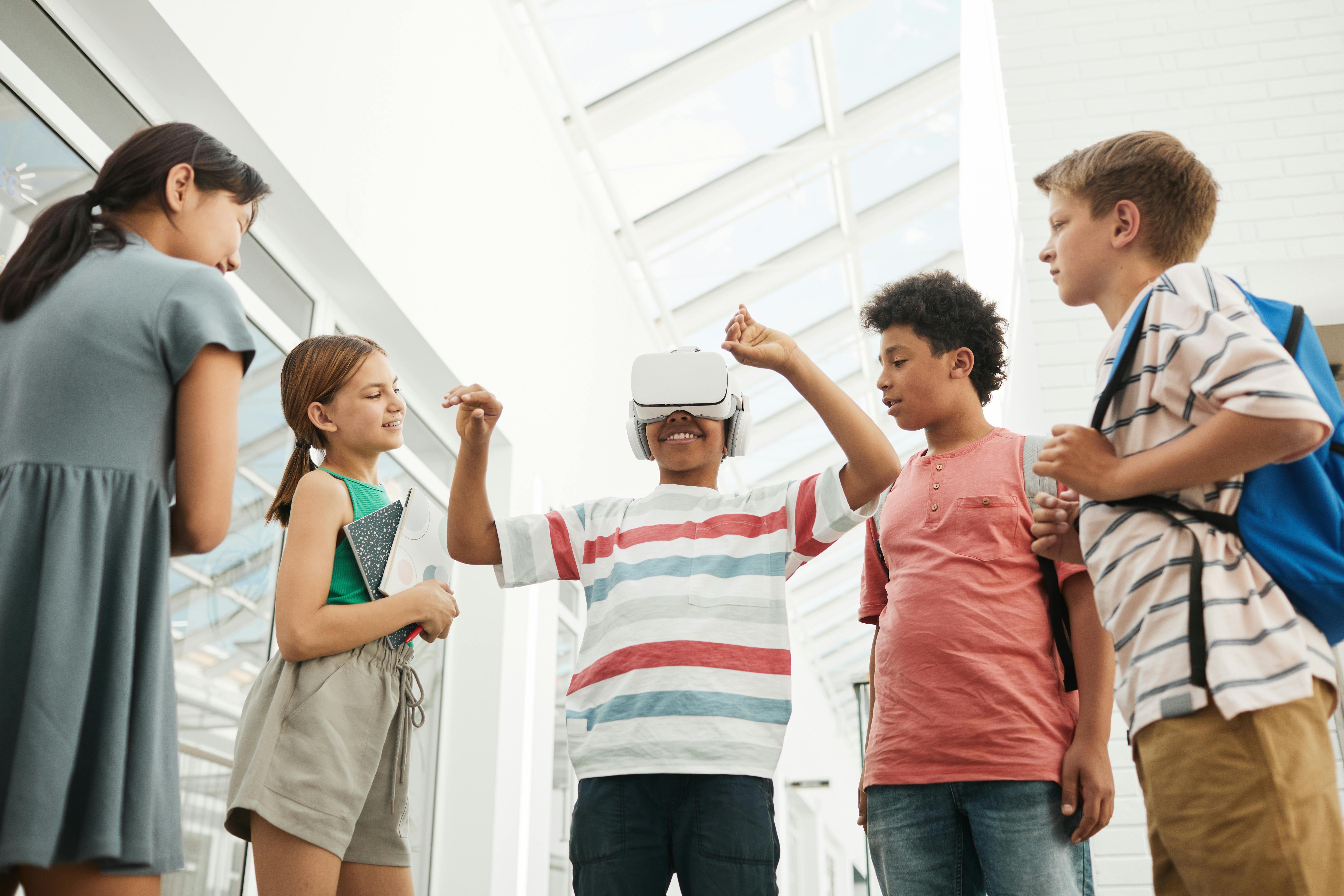Creating Educational Games for Classrooms: A Simple Guide
by WriteSeen
Designing educational games for classrooms is transforming how students engage with learning. But creating games that truly captivate and educate can be daunting.
We've developed a guide to simplify this process, offering innovative strategies to enhance educational experiences through games:
- Discover effective methods for designing educational games for classrooms that boost learning.
- Explore game-based learning insights, presenting compelling examples like "Minecraft: Education Edition."
- Learn to align game objectives with curriculum standards for impactful learning outcomes.
Why Design Educational Games for Classrooms?
Educational games have the potential to revolutionize classroom learning. They can transform the educational experience from traditional methods to an interactive and engaging environment. Here's why incorporating educational games is key:
- Enhanced Engagement: Games capture attention, creating an exciting learning atmosphere. Students who are engaged are more likely to retain information effectively.
- Encourages Critical Thinking: Many games stimulate strategic thinking and problem-solving skills. They motivate students to explore concepts deeply and apply knowledge practically.
- Positive Feedback Loops: Games offer immediate feedback, allowing students to recognize mistakes instantly and learn actively, which boosts confidence and understanding.
- Inclusivity: By accommodating different learning styles and paces, educational games support diverse learners, ensuring everyone in the classroom can benefit.
Real-world examples like "Minecraft: Education Edition" illustrate how gaming can support subjects ranging from language arts to science, offering a multifaceted approach to traditional education. This integration demonstrates a tangible uplift in student motivation and creativity while cultivating essential skills that extend beyond the classroom.

Understanding Learning Objectives
Defining clear learning objectives is essential when designing educational games. They serve as the backbone of your educational endeavor, ensuring that your content delivers tangible outcomes.
- Alignment with Curriculum: Your game should synchronize with curriculum standards. This ensures relevancy and maximizes student learning aligned with their educational requirements.
- Focus and Intent: Well-defined objectives give your game a clear purpose. Students will know what they're expected to learn and achieve, guiding their focus while playing.
- Assessment and Feedback: Clear objectives help assess student progress. With feedback systems integrated into the game, teachers can evaluate if objectives are being met and adjust strategies accordingly.
Incorporating educational standards from various fields solidifies the game's role in the curriculum. Objectives shouldn't just guide gameplay—they should provide educators with tools to measure educational impact and student growth effectively.
How to Identify Your Audience
Knowing your audience is crucial for crafting an impactful educational game. Recognizing their needs and skill levels allows for more personalized and effective game design.
- Assess Skills and Interests: Understand where students are academically and what piques their interest. This informs game complexity and content to match their needs.
- Adjust Complexity and Delivery: Tailor game mechanics and narratives to fit the classroom's skill range. Avoid overwhelming students with overly complicated systems that can distract from learning.
- Gather Feedback: Regularly seek input from students and educators. This shapes the game to be more relevant and effective by responding to real-world usage and experiences.
Engaging with your audience ensures that educational games remain relevant and impactful. By accurately addressing students’ current competencies and learning styles, you create an environment where education becomes a collaborative and evolving journey.
Choosing the Right Game Format
Selecting the right format for your educational game greatly affects its impact in the classroom. Each format offers unique interactions and benefits.
- Digital Games: Offer immersive experiences with rich graphics and interactivity. These are perfect for subjects requiring complex simulations or visualizations.
- Board Games: Promote face-to-face interaction and discussion, which can especially benefit social learning and cooperative skills.
- Role-Playing Games: Encourage empathy and deeper understanding through character involvement, making them effective for subjects like history or social studies.
Deciding on a format depends on classroom resources, learning objectives, and how you intend the game to dovetail with existing teaching strategies. Digital platforms can facilitate updates and modifications based on classroom feedback, ensuring the educational content remains fresh and engaging. Each format should be designed to not only convey information but to enhance the learning journey, encouraging students to explore topics deeply and eagerly.

How to Integrate Pedagogical Principles
To design effective educational games, integrating sound pedagogical principles is essential. This approach anchors the game in educational theory, ensuring it contributes to meaningful learning.
- Active Learning: Encourage students to engage with the material, fostering higher-order thinking. Games should prompt players to make decisions, solve problems, and apply concepts actively.
- Teamwork and Collaboration: Include mechanics that require students to work together. This not only builds communication skills but also mirrors real-world scenarios where collaboration is key.
- Challenging Yet Achievable Tasks: Tailor challenges to be within reach but enough to push students’ limits. Balancing difficulty ensures that students remain motivated without feeling overwhelmed.
By weaving in differentiated instruction, games cater to diverse learning preferences. Embedded feedback mechanisms within the games provide timely guidance, allowing students to learn from their actions and reinforcing correct strategies. This integration of pedagogical principles transforms games into sophisticated learning tools.
How Do Game Mechanics Enhance Learning?
Game mechanics are the driving force behind any educational game. They help crystallize learning objectives, making the educational process engaging and productive.
- Rules and Structure: A clear set of rules grounds the gameplay, providing students with a framework that mimics structured learning events.
- Rewards and Incentives: Points, badges, and progression systems motivate students and celebrate achievements, encouraging sustained effort and continuous improvement.
- Narratives and Storytelling: Building stories into the game provides context and stimulates curiosity, helping students relate to and retain complex concepts.
These elements channel student focus, turning gameplay into an immersive learning journey. Integrate mechanics that align with educational outcomes, keeping the experience engaging yet challenging. Well-crafted game mechanics elevate learning experiences, ensuring that educational games remain a vital supplement to traditional teaching methods.
Creating an Inclusive Learning Environment
Educational games should foster inclusivity, accommodating diverse learners and ensuring broad accessibility. Creating an inclusive environment empowers every student to thrive.
- Cultural Relevance: Use themes and scenarios that resonate with students’ experiences and backgrounds. This relevance increases engagement and makes learning more relatable.
- Language Support: Provide multilingual options and accessible narratives to support ESL students, ensuring language isn't a barrier to education.
- Adaptive Difficulty: Incorporate mechanisms that adjust challenges based on individual progress. This personalization keeps games equitable and tailored, helping all students succeed.
Inclusivity in educational games paves the way for meaningful experiences. By prioritizing a learning environment that celebrates diversity and addresses unique needs, games become powerful tools for universal education.

Evaluating the Effectiveness of Educational Games
Assessing the impact of educational games is crucial for determining their success in achieving learning outcomes. It informs refinements and validates the game as an educational tool.
- Feedback Collection: Gather qualitative and quantitative data from student experiences. Use surveys and performance metrics to capture insights into how well the game meets its objectives.
- Pre- and Post-Assessments: Evaluate learning progress by comparing knowledge and skills before and after engaging with the game. This comparison highlights the educational impact.
- Continuous Improvement: Use data to iterate and improve game design, ensuring it remains aligned with educational goals and responsive to student needs.
Effective evaluation helps to refine educational games, keeping them relevant and impactful. By continuously analyzing how these games support learning and engagement, developers can ensure they deliver meaningful educational experiences.
Conclusion
Designing educational games for classrooms is a powerful way to turn lessons into engaging, interactive experiences. When aligned with curriculum standards and sound pedagogical principles, these games can foster deeper understanding, critical thinking, and collaboration among students of all learning styles.
Success begins with knowing your audience, choosing the right game format, and integrating meaningful feedback. Games that are culturally relevant, adaptable in difficulty, and grounded in real-world application not only hold attention but also support measurable educational growth over time.
Whether you're an educator, game designer, or edtech innovator, designing educational games for classrooms unlocks new potential in modern learning. Join WriteSeen to connect with fellow creators, share your ideas, and help shape the future of classroom engagement—one game at a time.
TAGS